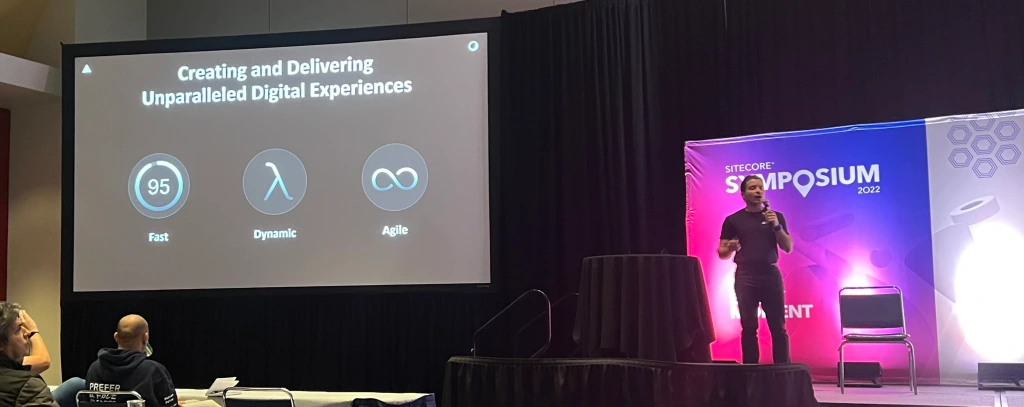
There are several buzzwords over the past few years that are finally starting to become realistic from a strategic and technical perspective. This has become especially clear after several announcements during Sitecore Symposium in October.
These terms and concepts have created ambiguity for Sitecore clients and partners alike as they signal significant shifts in Sitecore’s market posture.
Composable
A composable Digital Experience Platform is an integrated set of core technologies that support the composition, management, delivery and optimization of contextualized digital experiences.
It is purpose-build to be easy to use and implement, adapting to and enhancing the existing tech stack.
-- Sitecore Symposium 2022
Composability puts an emphasis on choosing the best products for your business needs. This may not always mean the product you need is from Sitecore. With that said, Sitecore has most of the bases covered with their new suite of products:

Headless
Headless has been a topic in almost all conversations around Sitecore since the release of the Javascript Services (JSS) module in 2017. In order to understand what headless means, we have to take a step back and look at a pattern called Jamstack.
Jamstack
Jamstack is an architectural approach that decouples the web experience layer from data and business logic, improving flexibility, scalability, performance, and maintainability.
Jamstack removes the need for business logic to dictate the web experience.
It enables a composable architecture for the web where custom logic and 3rd party services are consumed through APIs.
Sitecore’s Headless Module seeks to create a full-featured set of APIs for accessing content to be rendered using a front-end technology of your choice. For most Sitecore clients and partners, this choice is made based on the capabilities and strengths of your team.
Sitecore has gone a step further and established a partnership with Vercel, the creators of NextJS. This partnership streamlines a development team’s ability to take a site from concept to market in a much shorter period of time than with the traditional rendering model.

SaaS
SaaS is a deployment model that stands for Software as a Service. There are two other models: IaaS and PaaS, both of which continue to be supported by Sitecore. The primary differentiator between these three deployment models is the amount of concern that the client or partner has over the underlying platform and infrastructure.
SaaS aims to minimize those concerns while providing a consistent product across the entire customer base.
 -- What is SaaS? Software as a Service | Microsoft Azure
-- What is SaaS? Software as a Service | Microsoft Azure
XM Cloud
Sitecore XM Cloud is the successor to Experience Platform and is a full-fledged SaaS product. It alleviates many of the challenges associated with managing the Sitecore Platform and puts them squarely on the shoulders of the experts: Sitecore. While there are some tradeoffs around customization, many of those concerns are mitigated with the composable and headless architecture, allowing customers to choose the products they need while having ultimate flexibility in how content is presented on their site.
In my next post, I’ll walk through some common roadmap scenarios for Sitecore customers who want to stay on the Sitecore path, but are looking for strategic inspiration.